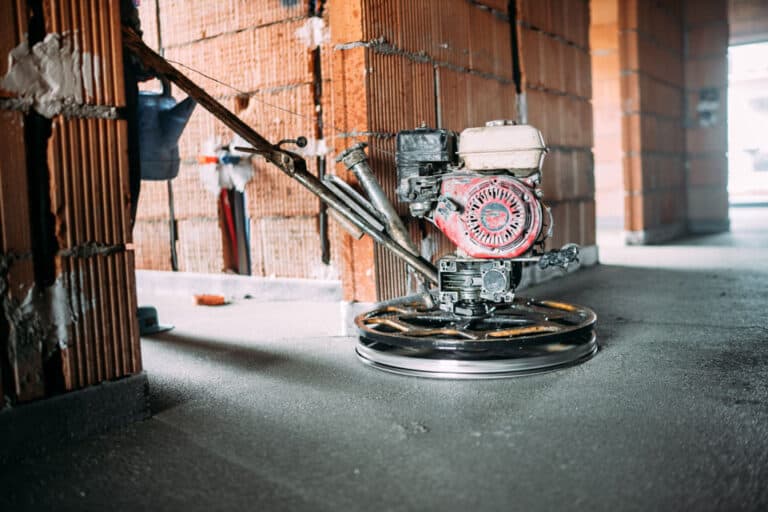First, let’s talk about the dangers of working with a mechanised concrete trowel. The biggest danger is the risk of injury to yourself or others. The trowel has a powerful motor that spins a set of blades at a high speed. If you’re not careful, you can accidentally touch the blades and get seriously hurt.
Another danger is the risk of the trowel tipping over. This can happen if you’re not paying attention to the weight distribution of the machine. If it tips over, it can cause serious damage to the machine or even injure someone nearby.
So, how can you stay safe when working with a mechanised concrete trowel? Here are some safety recommendations:
- Wear Protective Gear
The first and most important step to staying safe when working with a mechanised concrete trowel is to wear protective gear. This includes a hard hat, safety glasses, gloves, and steel-toed boots. These will protect you from flying debris and accidental contact with the blades.
- Follow Manufacturer’s Instructions
Before using a mechanised concrete trowel, it’s important to read and follow the manufacturer’s instructions. This will help you understand how to operate the machine safely and avoid accidents.
- Inspect the Machine Before Use
Before using a mechanised concrete trowel, inspect it to make sure it’s in good working condition. Check the blades, motor, and other parts for any signs of damage or wear. If you notice any problems, don’t use the machine until it’s been repaired or replaced.
- Pay Attention to Weight Distribution
As I mentioned earlier, the trowel can tip over if you’re not paying attention to the weight distribution. Make sure the weight is evenly distributed over the machine, and don’t overload it with too much concrete.
- Keep People Away
When using a mechanised concrete trowel, keep people away from the work area. This includes other workers, bystanders, and children. Make sure everyone knows to stay clear of the machine while it’s in use.
- Use a Ground Fault Circuit Interrupter (GFCI)
A GFCI is a safety device that can help protect you from electrical shock. If the machine comes into contact with water, the GFCI will shut off the power to the machine, preventing electrical shock.
- Never Touch the Blades
This is the most important safety recommendation when working with a mechanised concrete trowel. Never touch the blades while the machine is in operation. If you need to make an adjustment, turn off the machine and wait for the blades to stop spinning before making any changes.
In conclusion, a mechanised concrete trowel is a powerful tool that can help make concrete work faster and more efficient. However, it’s important to use it safely to avoid accidents and injuries. By following the safety recommendations I’ve outlined above, you can help ensure a safe and productive work environment. Stay safe out there, and I’ll catch you on the next one
Cheers,

![]()







